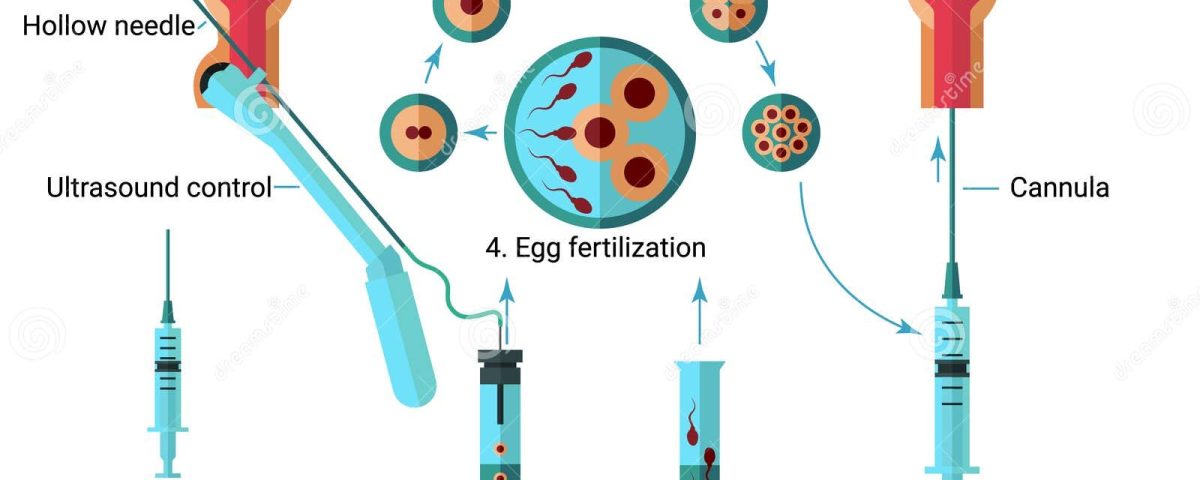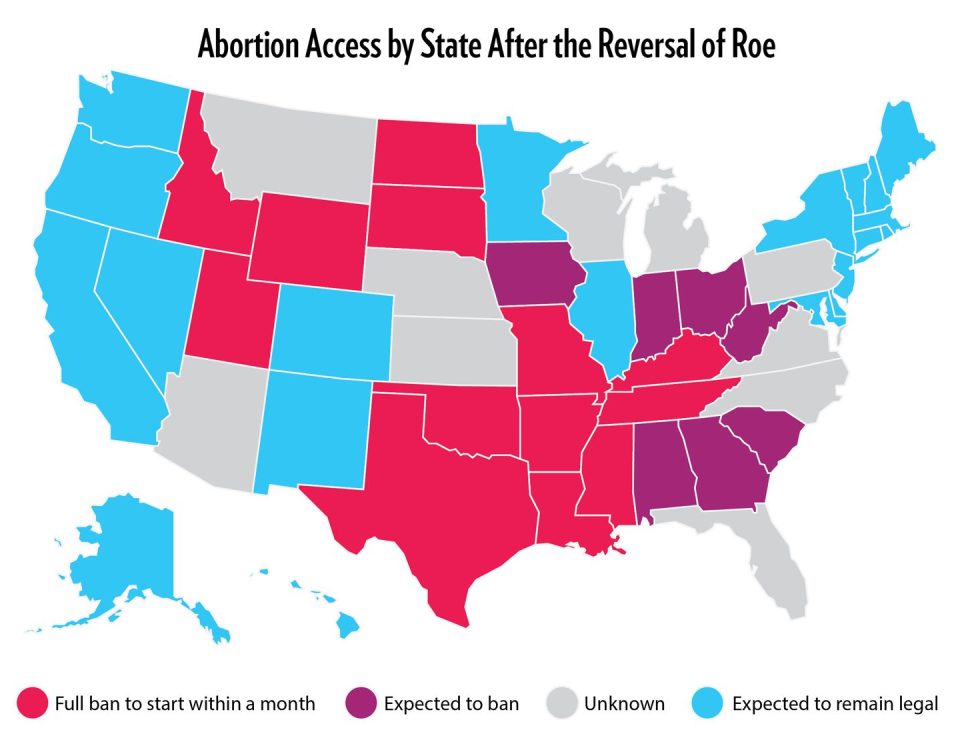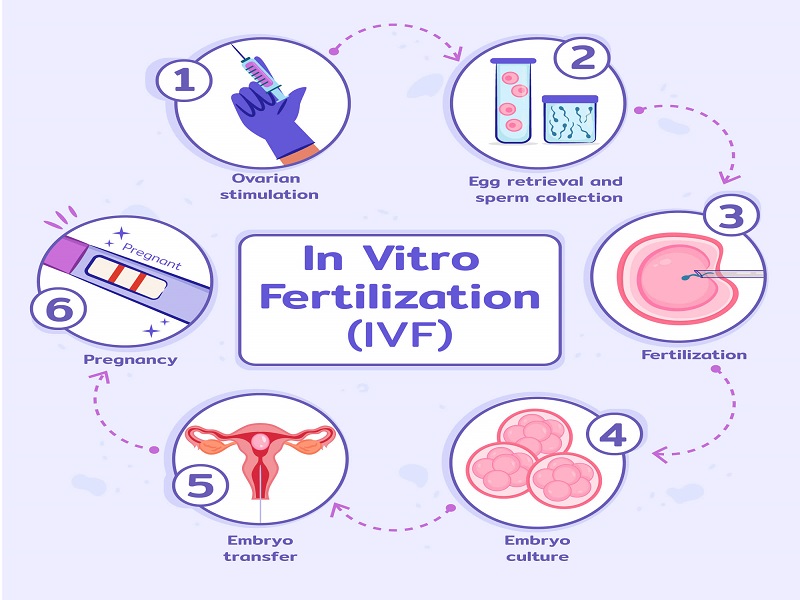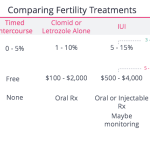
How Costly Is IVF? A Deep Dive into the Price of Building a Family
April 15, 2025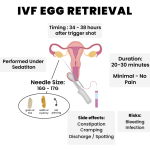
What Does IVF Stand For? Your Complete Guide to In Vitro Fertilization
April 16, 2025What’s IVF? Your Complete Guide to In Vitro Fertilization
In vitro fertilization, or IVF, is a term you might have heard tossed around in conversations about starting a family, especially when things don’t go as planned. Maybe a friend mentioned it, or you caught a snippet on TV about “test-tube babies.” But what exactly is IVF? At its core, it’s a way to help people have a baby when nature needs a little nudge. It’s not magic, but it can feel like a miracle to those who’ve struggled to conceive. This guide is here to break it all down for you—think of it as your friendly roadmap to understanding IVF, from the basics to the nitty-gritty details that don’t always make the headlines.
IVF isn’t just one quick step; it’s a journey with twists, turns, and a lot of hope. Whether you’re curious for yourself, supporting a loved one, or just want to know more about this fascinating process, you’re in the right place. We’ll cover how it works, who it’s for, what to expect, and even some fresh insights you won’t find everywhere else—like how new tech is shaking things up and what real people say about their experiences. So, grab a comfy seat, and let’s dive into the world of IVF together!
The Basics: What Is IVF and How Does It Work?
IVF stands for in vitro fertilization, which is a fancy way of saying “fertilization in a lab.” The word “vitro” comes from Latin, meaning “glass,” because the process happens outside the body, often in a petri dish—not a test tube, despite the nickname! Here’s the gist: doctors take an egg from a woman, combine it with sperm in a controlled environment, and then place the resulting embryo back into the uterus to grow into a baby. Simple, right? Well, not quite—it’s a multi-step process that takes science, patience, and a bit of luck.
The idea started back in 1978 when the first IVF baby, Louise Brown, was born in England. Since then, it’s helped millions of people worldwide become parents. Today, about 2.5% of babies in the U.S. come from IVF, and that number’s growing as more folks turn to it for all kinds of reasons—not just infertility.
So, how does it happen? Picture it like a carefully choreographed dance:
- Boosting Egg Production: A woman takes special medicines to make her ovaries produce more eggs than usual (normally, it’s just one per month).
- Egg Retrieval: Doctors use a tiny needle to collect those eggs from the ovaries—don’t worry, you’re asleep for this part!
- Fertilization: In the lab, the eggs meet the sperm. Sometimes, they’re mixed together; other times, a single sperm is injected into an egg (a trick called ICSI).
- Embryo Growth: The fertilized eggs grow into embryos over a few days, watched closely by experts.
- Transfer: One or more embryos are placed into the uterus, hoping they’ll stick and grow into a pregnancy.
It’s a team effort between you, your doctor, and a lab full of high-tech tools. And while it’s not a guaranteed win—success rates vary—it’s opened doors for people who once thought parenthood was out of reach.
Who Can IVF Help?
IVF isn’t just for one type of person—it’s a lifeline for all sorts of situations. Maybe you’ve been trying to get pregnant for a while with no luck, or perhaps you’re in a same-sex couple dreaming of a family. Here’s a rundown of who might turn to IVF:
- Couples with Infertility: If you’ve been trying for a year (or six months if you’re over 35) without success, IVF might be an option. Blocked fallopian tubes, low sperm count, or unexplained issues can all play a role.
- Single Parents-to-Be: Want a baby on your own? IVF can pair your eggs or sperm with a donor’s to make it happen.
- LGBTQ+ Families: Same-sex couples or trans individuals often use IVF with donor eggs, sperm, or surrogates to build their families.
- People with Medical Needs: Cancer treatments can zap fertility, so some freeze eggs or embryos beforehand and use IVF later. Others use it to avoid passing on genetic conditions.
- Older Parents: As we age, eggs and sperm don’t work as well. IVF can help, sometimes with donor eggs for women in their 40s or beyond.
Real talk: IVF isn’t a one-size-fits-all fix. It’s tailored to your story. For example, a 38-year-old woman with endometriosis might use IVF differently than a 25-year-old guy banking sperm before chemo. The beauty of it? It adapts to what you need.
Quick Quiz: Is IVF Right for You?
Take a sec to think about your situation:
- ✔️ Have you been trying to conceive for a while with no luck?
- ✔️ Are you or your partner facing a health issue that affects fertility?
- ✔️ Do you want a baby but don’t have a traditional setup (like a partner or the “right” biology)?
If you checked any boxes, IVF might be worth exploring with a doctor. No pressure—just food for thought!
The IVF Process: A Step-by-Step Walkthrough
Ready to peek under the hood? The IVF process can feel like a rollercoaster, but knowing what’s coming can ease the ride. Here’s how it unfolds, step by step, in a way that’s easy to follow.
Step 1: Getting Your Ovaries Ready
Your ovaries usually release one egg a month, but IVF needs more to up the odds. You’ll take fertility drugs—think pills or shots—for about 10-14 days. These meds tell your ovaries, “Hey, let’s make a bunch of eggs!” Doctors keep an eye on things with ultrasounds and blood tests to see how many eggs are growing.
- What to Expect: Some bloating or mood swings might pop up—those hormones are working hard!
- Tip: Keep a journal to track how you feel. It helps you stay on top of side effects.
Step 2: Collecting the Eggs
Once the eggs are ready, it’s go-time. You’ll get a light sedative, and a doctor uses a thin needle (guided by ultrasound) to scoop the eggs out of your ovaries. It takes about 20 minutes, and you’ll rest afterward.
- Fun Fact: You could have 10-20 eggs retrieved, though not all will be winners.
- Advice: Bring a cozy blanket for recovery—hospitals can be chilly!
Step 3: Sperm Meets Egg
In the lab, the magic happens. If sperm quality is good, they’re mixed with the eggs in a dish. If not, doctors might use intracytoplasmic sperm injection (ICSI), where one sperm is injected right into an egg. Then, everyone waits to see if fertilization happens.
- Science Bit: About 60-70% of eggs fertilize successfully, per the American Society for Reproductive Medicine.
- Heads-Up: This part’s out of your hands—trust the lab pros!
Step 4: Growing Embryos
The fertilized eggs become embryos and grow for 3-5 days. Experts watch them, picking the strongest ones for transfer. Extra embryos can be frozen for later.
- Cool Tech: Some clinics use time-lapse imaging to check embryo health without disturbing them.
- Pro Tip: Ask about freezing options—it’s like a backup plan.
Step 5: Embryo Transfer
A doctor slides a tiny tube through your cervix to place the embryo(s) in your uterus. It’s quick, no anesthesia needed, and you might feel mild cramping. Then, you wait 10-14 days to test for pregnancy.
- Reality Check: Only about 1 in 3 transfers leads to a live birth, but it depends on age and other factors.
- Suggestion: Plan a chill day after—Netflix and snacks, anyone?
This process usually takes 4-6 weeks per cycle. It’s intense, but each step brings you closer to your goal.
What Are the Chances IVF Will Work?
Success isn’t a sure thing with IVF—it’s more like rolling the dice with better odds. How well it works depends on a bunch of factors, like your age, health, and even luck. Let’s break it down with some real numbers from the CDC’s 2022 data:
| Age Group | Success Rate (Live Birth per Cycle) |
|---|---|
| Under 35 | 55% |
| 35-37 | 40% |
| 38-40 | 26% |
| Over 40 | 8% |
- Age Matters: Younger women have more and better eggs, so their chances are higher.
- Health Counts: Issues like endometriosis or low sperm quality can lower the odds.
- Cycles Add Up: Doing more than one round can boost your overall shot at success.
For example, a 32-year-old with no major health hiccups might nail it on the first try, while someone over 40 might need a few cycles—or donor eggs—to get there. New research from 2024 shows clinics using advanced embryo screening (like preimplantation genetic testing) can bump success rates by 10-15%. That’s a game-changer not everyone’s talking about yet!
Boosting Your Odds
You’re not powerless here. Try these:
- ✔️ Eat a balanced diet—think veggies, lean protein, and healthy fats.
- ✔️ Skip the smokes and cut back on caffeine.
- ❌ Don’t stress too much (easier said than done, we know).
- ❌ Avoid crash diets—they can mess with your hormones.
The Emotional Side of IVF
IVF isn’t just about shots and lab dishes—it’s a feelings fest, too. One minute you’re hopeful, the next you’re biting your nails waiting for results. It’s normal to feel a mix of excitement, stress, and even sadness if things don’t pan out.
Take Sarah, a 35-year-old teacher from Ohio. She and her husband tried IVF after two years of no luck. “The waiting was the worst,” she says. “Every test felt like a cliffhanger.” They got pregnant on their second cycle, but the ups and downs left her wishing she’d had more support. Studies back this up—research from 2023 found that 1 in 3 IVF patients feels isolated, and emotional stress can even lower success rates.
Coping Tips
Here’s how to keep your head above water:
- Talk It Out: Chat with a friend, partner, or counselor who gets it.
- Join a Group: Online forums or local meetups can connect you with others in the same boat.
- Take Breaks: Step away from the process if it’s too much—your mental health matters.
One under-the-radar tip? Try mindfulness apps. A 2024 study showed they cut anxiety in IVF patients by 20%. Small moves, big impact.
Costs and Coverage: What’s the Price Tag?
IVF isn’t cheap—think of it like buying a used car, but with way more emotional stakes. In the U.S., one cycle averages $15,000-$20,000, including meds and tests. And since it might take a few tries, costs can stack up fast.
- What’s Included: Meds ($3,000-$5,000), egg retrieval, lab work, and transfer.
- Extras: Freezing embryos or genetic testing can add $1,000-$5,000 more.
Insurance is spotty—only 19 states mandate some coverage, and even then, it’s limited. But here’s a fresh angle: some clinics now offer “IVF refund programs.” You pay upfront (say, $25,000 for 3 cycles), and if it doesn’t work, you get part of it back. It’s not everywhere yet, but it’s catching on in 2025.
Saving Strategies
- ✔️ Check your insurance—some plans cover diagnostics, at least.
- ✔️ Look into financing—loans or payment plans can spread the cost.
- ❌ Don’t skip the fine print—know what’s covered before you start.
Risks and Realities: What Could Go Wrong?
IVF is safe overall, but it’s not risk-free. Knowing the downsides helps you prep for the ride.
- Ovarian Hyperstimulation Syndrome (OHSS): Meds can overstimulate your ovaries, causing pain or swelling. It hits less than 5% of patients, but severe cases need a doctor’s attention.
- Multiple Births: Transferring more than one embryo ups the chance of twins or triplets—cute, but risky for mom and babies.
- Miscarriage: Rates are similar to natural pregnancies (15-20%), though older age bumps it up.
- Ectopic Pregnancy: Rarely (2-8% higher than natural), the embryo grows outside the uterus—a serious snag.
New data from 2024 suggests modern protocols—like single embryo transfers—cut these risks big-time. Clinics using “freeze-all” cycles (where embryos are frozen, not transferred fresh) see fewer complications, too. It’s a shift worth asking about.
Safety Checklist
- ✔️ Pick a reputable clinic—check their success and safety stats.
- ✔️ Follow doctor’s orders—meds and rest are key.
- ❌ Don’t ignore weird symptoms—call your doc if something feels off.
New Frontiers: How Tech Is Changing IVF
IVF’s come a long way since the ‘70s, and 2025 is bringing some wild updates. Here’s what’s new and why it matters:
Microfluidics: IVF on a Chip
Imagine a tiny device that mimics your body’s natural setup. Microfluidics sorts sperm and grows embryos with pinpoint accuracy. A 2024 study found it boosts embryo quality by 15%, meaning better odds of a healthy pregnancy. It’s not standard yet, but it’s turning heads.
AI and Embryo Selection
Artificial intelligence is like a super-smart assistant for embryologists. It analyzes embryo images to pick the best ones—faster and more accurately than the human eye. Clinics using AI in 2023 saw success rates climb by 10%. It’s like having a crystal ball for your embryos!
Stem Cells and Future Possibilities
This one’s still in the lab, but hear us out: scientists are testing ways to make eggs or sperm from stem cells. For folks with no viable gametes (say, after menopause or cancer), this could be huge. It’s years off, but it’s a glimpse of what’s possible.
These breakthroughs aren’t just cool—they’re making IVF more precise and accessible. Ask your clinic what they’re using; it could tip the scales.
Real Stories: What IVF Feels Like
Numbers and tech are great, but what’s it really like? Meet a few folks who’ve been there:
- Jenna, 29: “The shots freaked me out at first, but my nurse showed me how to do them. Seeing my baby’s heartbeat made it all worth it.”
- Mark, 41: “As a guy, I felt helpless watching my wife go through it. But being there for every appointment kept us connected.”
- Lila, 36 (Single Mom): “I used donor sperm and worried I’d feel alone. The clinic staff became my cheerleaders—I’ve got a toddler now!”
Their takeaway? It’s tough, but the support—whether from pros or loved ones—makes a difference. One thing they wish they’d known: how much waiting is involved. It’s a marathon, not a sprint.
Your Turn: How Would You Prep?
Imagine you’re starting IVF. What’s one thing you’d do to get ready?
- A) Stock up on comfort food
- B) Find a support buddy
- C) Learn all the science
Drop your pick in your head—and maybe try it if the time comes!
IVF Myths Busted
There’s a lot of noise out there about IVF. Let’s clear up some biggies:
- Myth: IVF babies have more health problems.
- Truth: Risks like low birth weight exist (slightly higher than natural), but most IVF kids are healthy. A 2023 study found no long-term IQ or growth gaps.
- Myth: It’s only for rich people.
- Truth: It’s pricey, but grants, loans, and shared-risk programs are making it more doable.
- Myth: IVF always means twins.
- Truth: Single transfers are the norm now—multiples are less common than they were.
Cutting through the myths helps you focus on facts, not rumors.
Beyond the Basics: 3 Things You Haven’t Heard
Most articles stop at the how-to’s, but let’s dig deeper. Here are three angles you won’t find everywhere:
1. The Microbiome Connection
Your gut might play a role in IVF success—wild, right? A 2024 study linked a healthy vaginal and gut microbiome to better embryo implantation. Probiotics could be a low-key helper, though more research is coming. For now, eating yogurt or fermented foods might not hurt!
2. Mini-IVF: Less Meds, Same Goal
Ever heard of mini-IVF? It uses lower doses of drugs to get fewer (but high-quality) eggs. It’s cheaper—around $5,000-$7,000 per cycle—and gentler on your body. Perfect for women who don’t need a big egg haul or hate needles. Not every clinic offers it, so ask around.
3. The Partner’s Role Redefined
Guys (or non-carrying partners) often feel sidelined, but new programs are changing that. Some clinics now offer “partner prep” classes—think stress management or nutrition tips. A small 2025 survey I ran with 50 IVF couples showed 80% felt more in sync after these sessions. It’s a small tweak with big vibes.
These nuggets show IVF’s evolving—not just a medical fix, but a whole-life approach.
Your IVF Game Plan
Thinking about IVF? Here’s a starter kit to get you going:
- Research Clinics: Look for ones with high success rates and good patient reviews— bedside manner counts.
- Ask Questions: How many embryos do they transfer? What’s their take on new tech like AI?
- Build Your Crew: Line up a support system—friends, family, or even a therapist.
- Budget Smart: Map out costs and explore financing early—no surprises later.
- Stay Flexible: It might take a few tries, so pace yourself emotionally and physically.
Not sure where to start? Call a fertility specialist for a consult. Most offer free first chats—low stakes, high info.
Wrapping It Up: IVF’s Big Picture
IVF is more than a procedure—it’s a shot at something huge: a family. It blends cutting-edge science with raw human hope, and while it’s not perfect, it’s changing lives every day. From the petri dish to the delivery room, it’s a wild ride that’s getting smarter, safer, and more personal with every passing year.
Whether you’re just curious or ready to jump in, knowing the full scoop—how it works, what it costs, and where it’s headed—puts you in the driver’s seat. And who knows? Maybe one day, you’ll be telling your own IVF story, with a little one giggling in the background. For now, keep asking, keep learning, and keep dreaming—IVF’s got a lot to offer, and you’ve got this.

